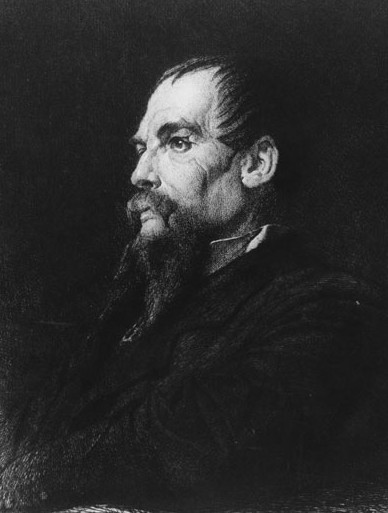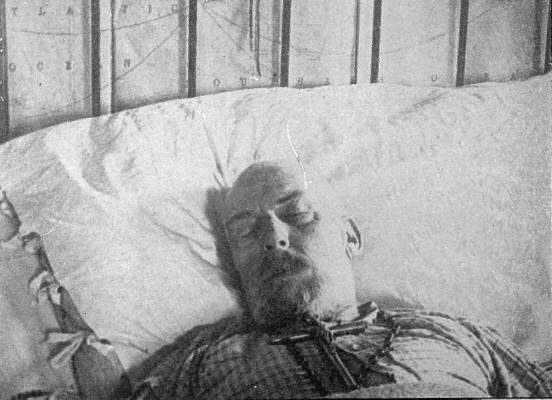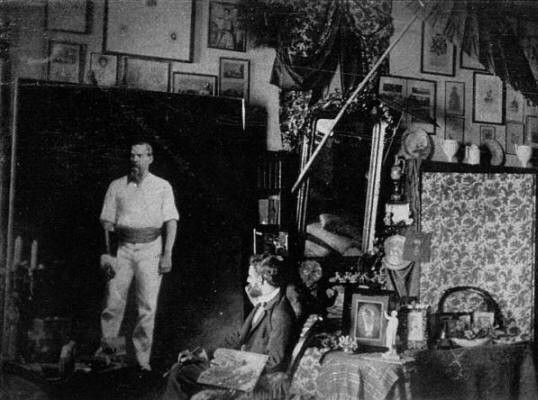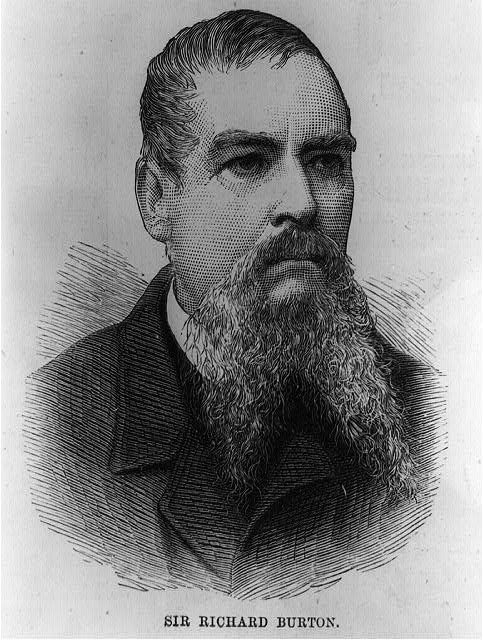British explorer, translator, and Orientalist, Sir Richard Burton was born in Ireland of an English family but raised in Italy and France. His multicultural childhood helped him eventually master twenty-five languages. He was the first translator of the Arabian Nights (sixteen volumes, 1885-88).
After expulsion from Oxford University, he joined the Indian Army in 1842. He recorded his experiences as an intelligence officer in the Bombay Native Infantry in his first book Scinde or the Unhappy Valley (1851). Burton disguised himself as a Muslim to make the pilgrimage to Mecca in 1853, which he described in Personal Narrative (1855).
With John Hanning Speke (1827-1864), Burton intended to find the source of the Nile. They explored Somalia in 1854. This was the subject of his book First Footsteps in East Africa published in 1856. They set out from Zanzibar to the Lake Tanganiyika area in 1857, and arrived at the Lake in 1858. Speke, although nearly blind from exposure to the sun during his travels, continued the expedition alone and discovered what he considered the source of the Nile: Lake Victoria. But Burton disputed this and the two had a falling out over the issue of the source of the Nile. Speke died in a hunting accident in 1864.

Etching of Sir Richard Francis Burton (1821-1890) by Leopold Flamens, after a painting by Sir Frederick Leighton.

Sir Richard Francis Burton, "Vanity Fair" cartoon, 1885.
After joining the British Foreign Office, Burton was appointed counsel in Fernando Po, Spanish West Africa from 1861-65. There he gathered the material for five books on African customs. Burton married Isabel Arundell (1831-1896) in 1861. She traveled with him and wrote his biography.
Burton served with the British Foreign Service in Damascus from 1869-71 and Trieste in 1872, where he made his family home. He explored the Gold Coast with Captain Cameron, 1881-82.
His skills as a translator are still respected: Burton translated the Kama Sutra in 1883; the Perfumed Garden in 1886. He was knighted in 1886; Burton died in Trieste in 1890.

George Atkinson, "Our Monshee" from "Curry and Rice on Forty
Plates," (1859) thought to be a portrait of Sir Richard Francis Burton.

Anonymous photograph of Sir Richard Burton, 1854.

Anonymous photograph, Sir Richard Burton on his deathbed, 1890.

Anonymous photograph of Albert Letchford painting portrait of Sir
Richard Francis Burton, August 1889.

Anonymous wood engraving (1887), Library of Congress, Washington,
DC.
Please contact Art Experts with your questions about portraits of Sir Richard Francis Burton or works of art related to him at info@artexpertswebsite.com.
